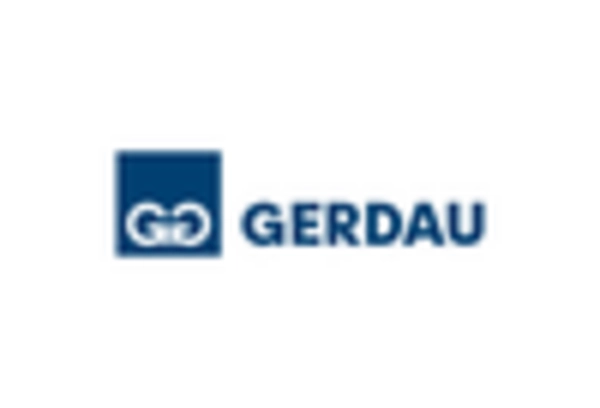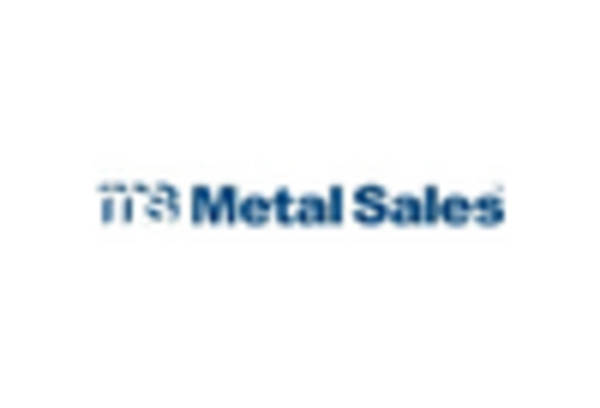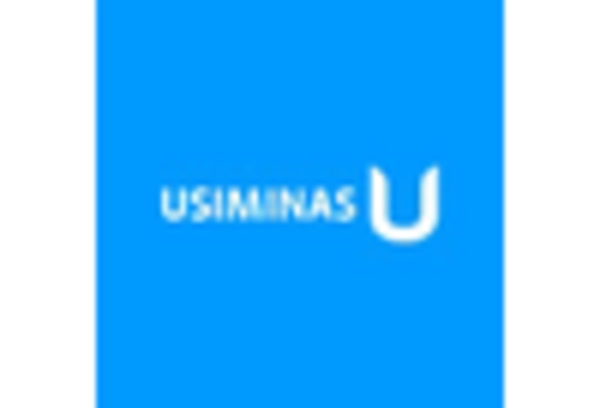Growing Focus on Sustainability
Sustainability initiatives are becoming increasingly prominent within the Central South America Iron Casting Market. Manufacturers are adopting eco-friendly practices, such as using recycled materials and reducing energy consumption during production. The push for sustainable practices is driven by both regulatory pressures and consumer preferences for environmentally responsible products. As a result, companies that prioritize sustainability are likely to gain a competitive edge in the market. The trend towards green manufacturing is expected to influence the sourcing of raw materials and the overall production processes, potentially leading to a more sustainable iron casting industry in the region.
Infrastructure Development Projects
Infrastructure development remains a critical driver for the Central South America Iron Casting Market. Governments in the region are investing heavily in infrastructure projects, including roads, bridges, and public transportation systems. For instance, Brazil's infrastructure investment plan aims to allocate billions of dollars towards enhancing transportation networks. This influx of capital is expected to increase the demand for iron castings used in construction machinery and structural components. The anticipated growth in infrastructure projects is likely to create a robust market for iron castings, as these materials are integral to the durability and strength of construction applications.
Expansion of Renewable Energy Sector
The expansion of the renewable energy sector is emerging as a significant driver for the Central South America Iron Casting Market. As countries in the region invest in wind and solar energy projects, the demand for iron castings used in energy infrastructure is likely to increase. Components such as wind turbine bases and solar panel mounts require durable and reliable materials, making iron castings a preferred choice. The growth of renewable energy initiatives aligns with global trends towards cleaner energy sources, suggesting a promising outlook for the iron casting market as it adapts to support these evolving energy needs.
Rising Demand from Automotive Sector
The automotive sector in Central South America is experiencing a notable surge in demand for iron castings, driven by the increasing production of vehicles. This sector is projected to grow at a compound annual growth rate of approximately 4.5% over the next five years. Iron castings are essential for manufacturing various automotive components, including engine blocks and transmission housings. As automotive manufacturers seek to enhance performance and reduce weight, the Central South America Iron Casting Market is likely to benefit significantly from this trend. Furthermore, the shift towards electric vehicles may also create new opportunities for iron casting applications, as these vehicles require specialized components that can be efficiently produced using iron casting techniques.
Technological Innovations in Casting Processes
Technological advancements in casting processes are reshaping the Central South America Iron Casting Market. Innovations such as 3D printing and automated casting techniques are enhancing production efficiency and reducing waste. These technologies allow manufacturers to produce complex designs with greater precision, which is increasingly demanded by various industries. The integration of smart manufacturing practices is also expected to optimize supply chain management and reduce lead times. As companies adopt these advanced technologies, the market for iron castings is likely to expand, catering to the evolving needs of sectors such as aerospace and machinery manufacturing.


















Leave a Comment